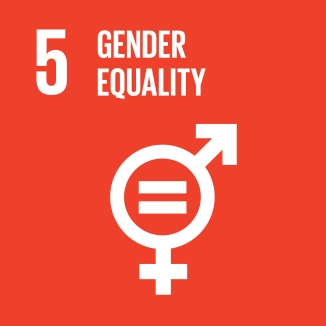
ICMA, the IFC and UN Women have launched a guide outlining practical ways to use sustainable debt to advance gender equality, with the bond market yet to realise its potential to meaningfully contribute to SDG 5, according to proponents of the new guide.
Launched on Tuesday of last week (16 November), Bonds to Bridge the Gender Gap: A Practitioner’s Guide to Using Sustainable Debt for Gender Equality offers examples of how to identify gender-related use-of-proceeds and establish gender-related commitments for sustainability-linked bonds (SLBs), while building on the existing frameworks, such as the Social Bond Principles (SBP), the Sustainability Bond Guidelines (SBG), and the Sustainability-Linked Bond Principles (SLBP).
The institutions behind the guidance highlight that while sustainable finance is on the rise, including offering new ways of driving finance to address social issues, debt capital flows are not on track to “meaningfully contribute” to the United Nations’ Sustainable Development Goal (SDG) 5: achieve gender equality and empower all women and girls. They noted that the pandemic has only exacerbated the gender gap, disproportionately impacting women.
 “The achievement of gender equality and women’s empowerment, as embodied in Sustainable Development Goal 5, is critical for humanity to progress and realise its full potential,” said Sima Sami Bahous, UN Women executive director (pictured). “UN Women is proud to be working alongside capital market actors to ensure that financing from both the public and private sectors is sustainable and inclusive.
“The achievement of gender equality and women’s empowerment, as embodied in Sustainable Development Goal 5, is critical for humanity to progress and realise its full potential,” said Sima Sami Bahous, UN Women executive director (pictured). “UN Women is proud to be working alongside capital market actors to ensure that financing from both the public and private sectors is sustainable and inclusive.
“This global guide is a foundational first step in this journey.”
Valérie Guillaumin, director in the International Capital Market Association (ICMA) sustainable finance team, said that despite widespread recognition of the importance of the importance of gender equality for sustainable development among capital market players, and the increasing interest in gender lens investing and uptick in awareness and issuance of social bonds, the bond market is yet to realise its potential in using social or sustainability-linked instruments to advance gender equality.
“Issuers continue to struggle to identify eligible use-of-proceeds related to gender beyond access to finance for women entrepreneurs and gender targets have largely been absent from SLB issuances to-date,” she explained. “Bond issuers and investors need practical examples of how to integrate gender into thematic bond instruments.”
Under the use-of-proceeds approach, the guide underlines that the SBP specifically identify women as an eligible target population for social bond projects that could be covered under the high level “socioeconomic advancement and empowerment” category.
“Labelled securities, specifically social bonds, present a unique opportunity to address gender equity challenges by directly financing critical women’s issues, like access to clean water and education, as well as for the operation and expansion of businesses,” said Nuveen, the investment manager of TIAA.
As appropriate private sector use-of-proceeds, the guide offers an example of updating workplace facilities to be more family-friendly and/or providing family friendly services, for example breastfeeding rooms and childcare facilities.
When incorporating gender equality objectives into a use-of-proceeds bond, issuers have three options, according to the guide: to have these as the sole objective of a social bond, with these having been commonly referred to as “gender bonds”; alongside other social objectives in a broader social bond; or alongside green objectives in a sustainability bond.
Alternatively, the guide suggests a performance-based approach through SLBs, which can allow issuers to demonstrate a “high-level commitment” to advancing gender equality via one or more gender related key performance indicators (KPIs) and sustainability performance targets (SPTs), noting that this approach is best suited to issuers without a sufficient pipeline of eligible projects.
 An example provided of an SPT under the “life free of violence” category, is to increase the number of services that prevent and respond to gender-based violence, including sexual harassment in public spaces, by a specified date.
An example provided of an SPT under the “life free of violence” category, is to increase the number of services that prevent and respond to gender-based violence, including sexual harassment in public spaces, by a specified date.
Some companies already include relevant gender KPIs in their corporate reporting, if not yet in sustainable bonds.
“EDF included the percentage of women in management committees as a Key Performance Indicator to reflect our corporate commitment to gender equality and to respond to the strong investor interest for its inclusion into sustainable finance instruments,” said the French group, which was one of the parties that contributed input to the authors.
Despite the guide’s acknowledgement of the term “gender bonds”, Guillaumin at ICMA said it is not promoting a new label.
“Rather, it encourages the use of existing financial instruments to advance gender equality,” she said. “Issuers choosing to incorporate gender equality as the sole objective of a social bond, often referred it to as a ‘gender bond’ to make it clear to the market what the objectives are.
“If it is aligned with the core components of the SBP, it remains structurally a social bond.”
Main photo: Mexico City Generation Equality Mural by artist Adry del Rocio on 29 March ahead of its unveiling in conjunction with the Generation Equality Forum in Mexico; Credit: UN Women/Dzilam Méndez



